Speaking of tradition: we occasionally hear complaints that conservation reserves ‘lock up’ public land, and deprive people of their traditional rights, including the right to drive anywhere they like.
The fact that millions of Australians visit our reserves each year rather dents the ‘locked up’ claim. But it’s true that sometimes conservation does require restrictions of access, or at least of some kinds of access. And here’s a possible example: maybe this track on the west side of Mount Tarrengower should be closed, to prevent further damage:
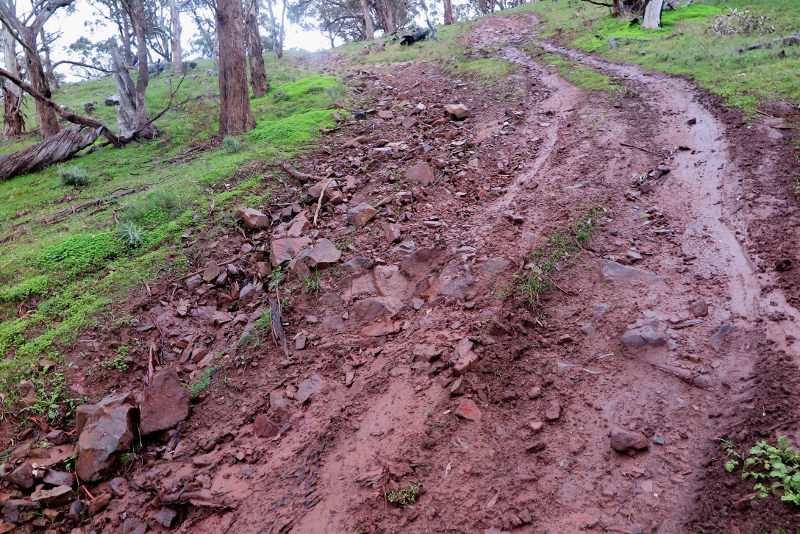
Tarrengower, west side: this track goes nowhere, and appears to exist solely to provide sport for people who love tearing up the land.
The track in question doesn’t serve a useful purpose, unless you count as ‘useful’ the chance for tough people in heavy vehicles to rip up a bit of dirt. The process is simple, and has the inevitable result of forming deep grooves, some nearly a metre deep. These become undriveable, and so the drivers in question just form another road, and repeat the dose:
The result is, of course, erosion, especially on the steeper sections of this track.
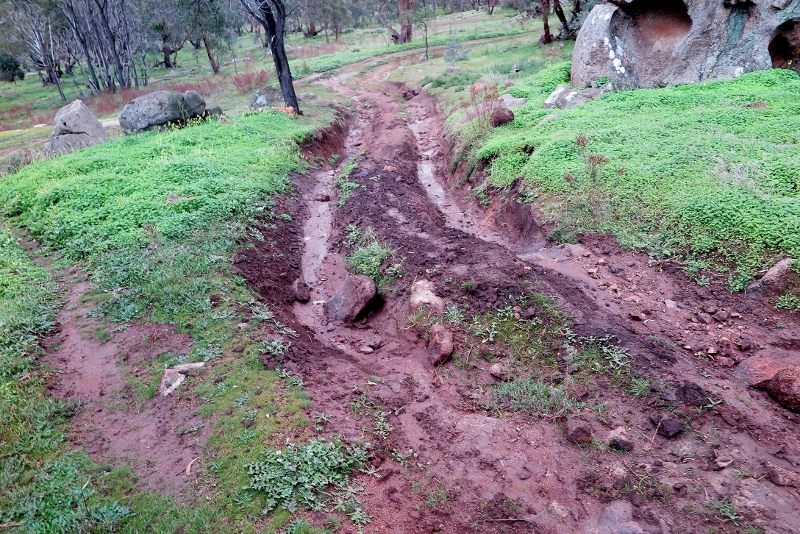
As the track deteriorates and becomes undrivable even for the toughest of tough guys, new tracks are created, as seen on the left of this picture.
FOBIF has asked Parks Victoria if it has a policy about keeping this track open. It’s not always easy to close tracks, because of that old chestnut about ‘locking up’ the land: but in this case, it’s hard to believe anyone could credibly claim a public benefit in leaving it open. The environmental damage is clear. Not all traditions are good–and the ‘tradition’ of tearing up the country for fun is no better than pouring sludge over it.

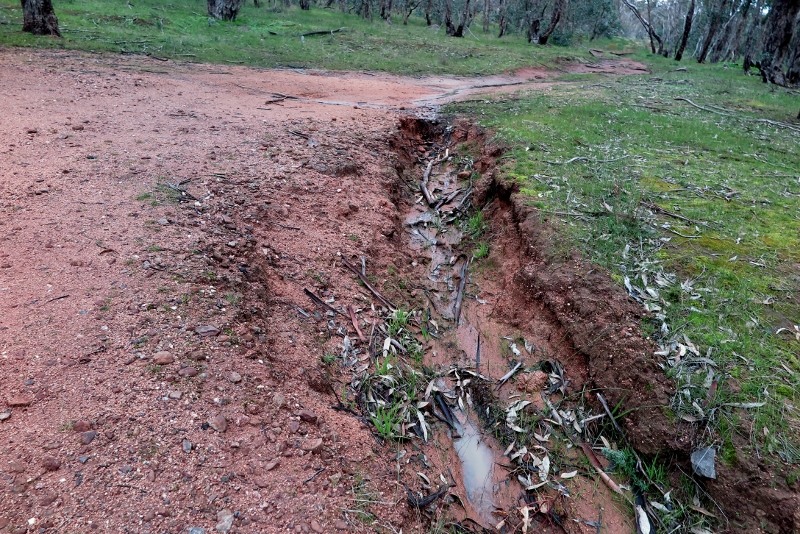
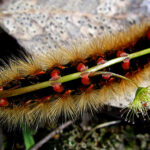
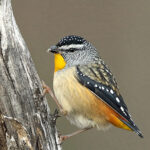
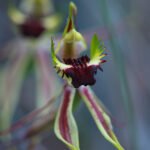
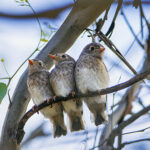
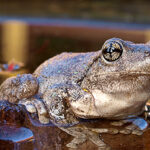
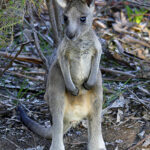
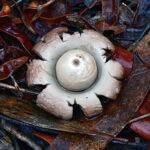
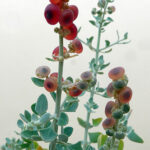
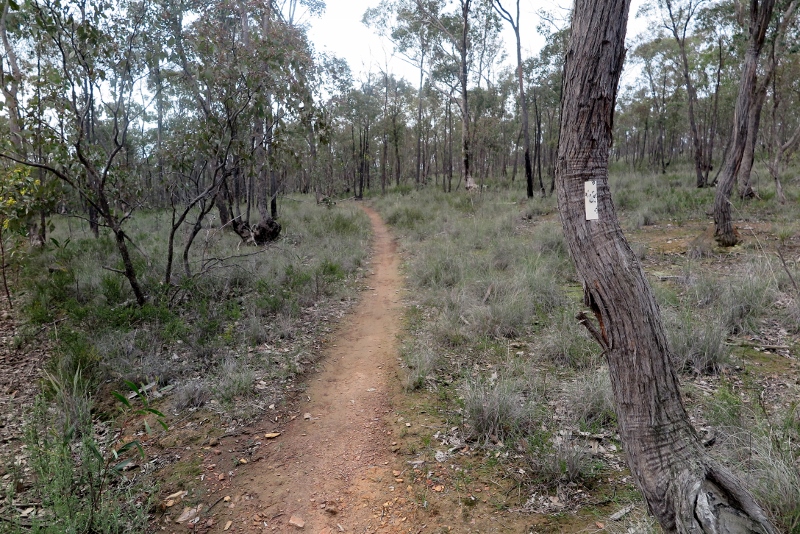
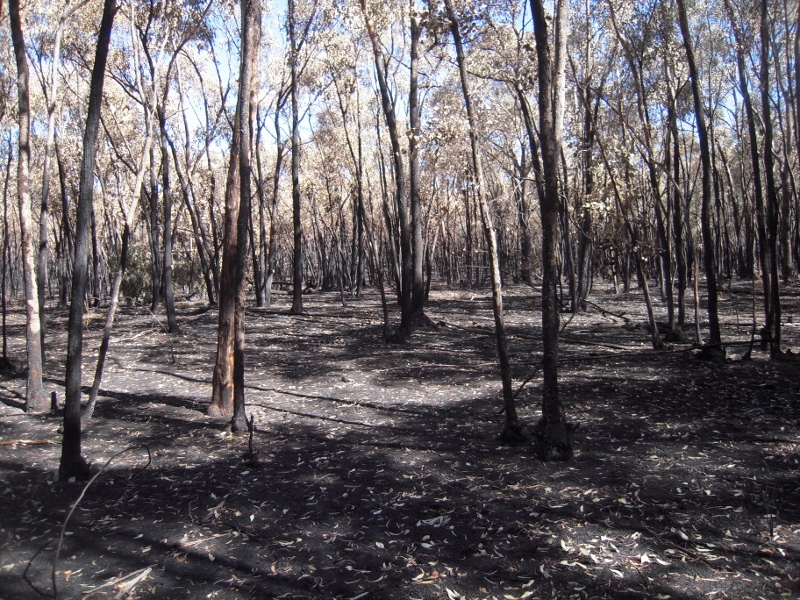
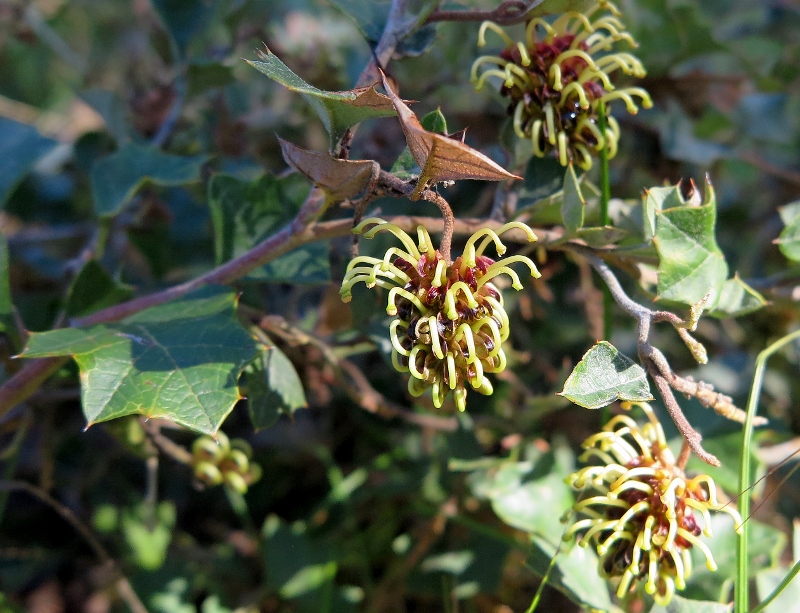
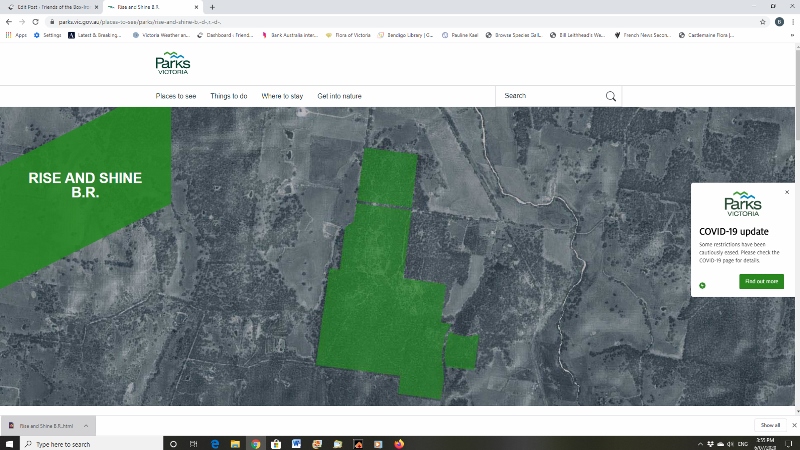
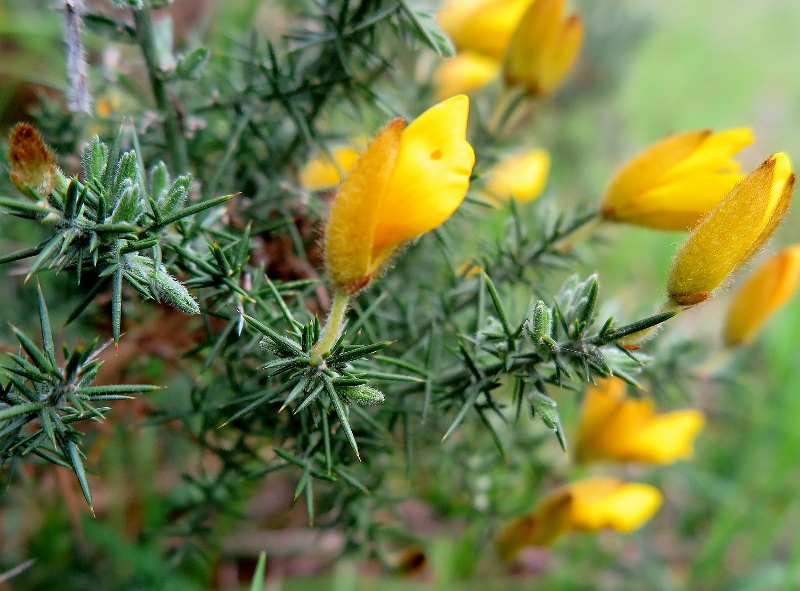

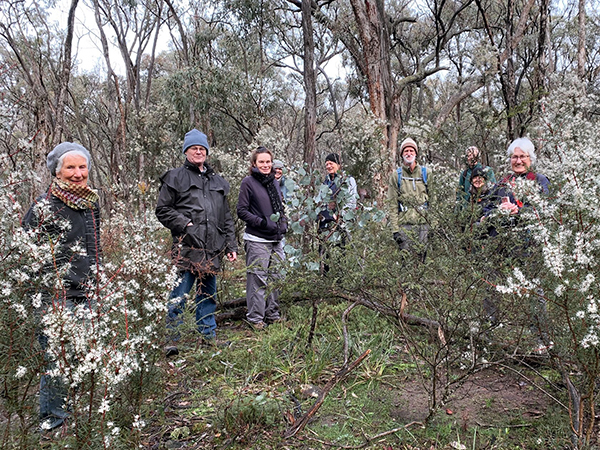
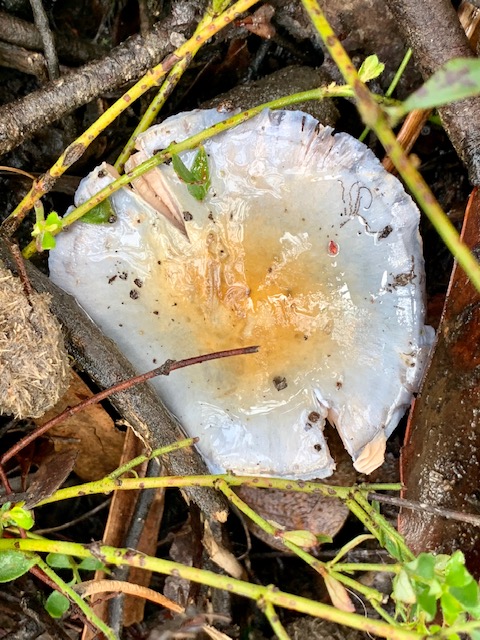
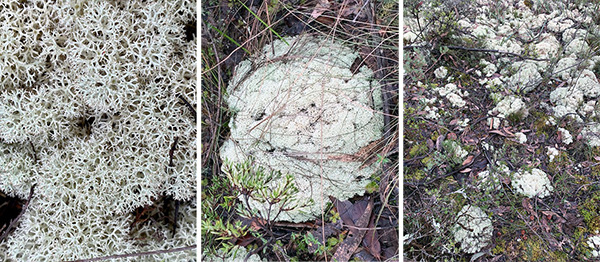
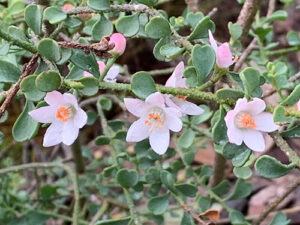
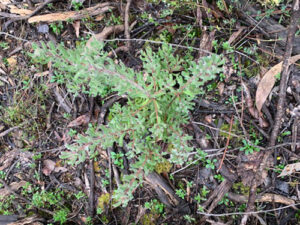
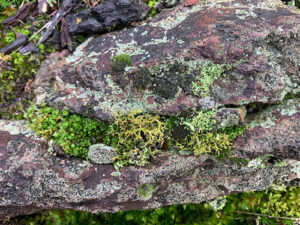
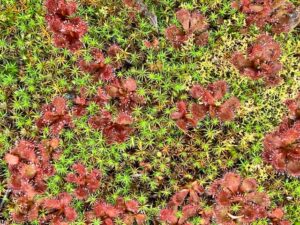
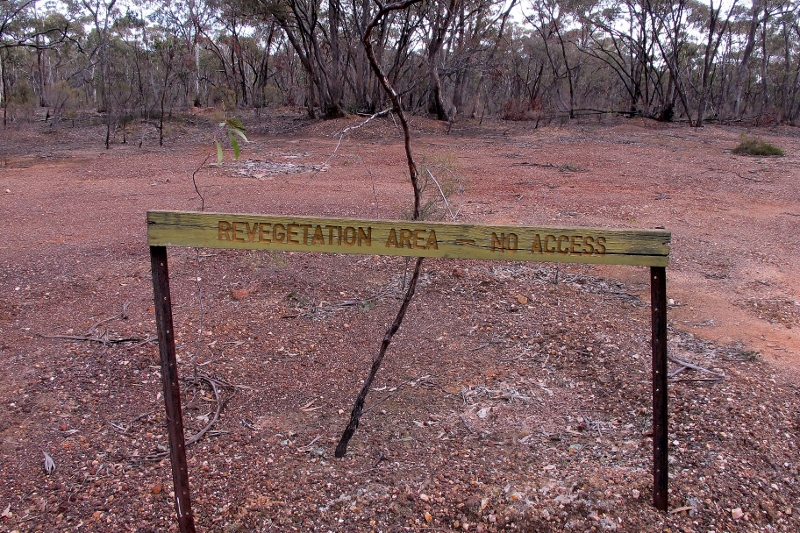
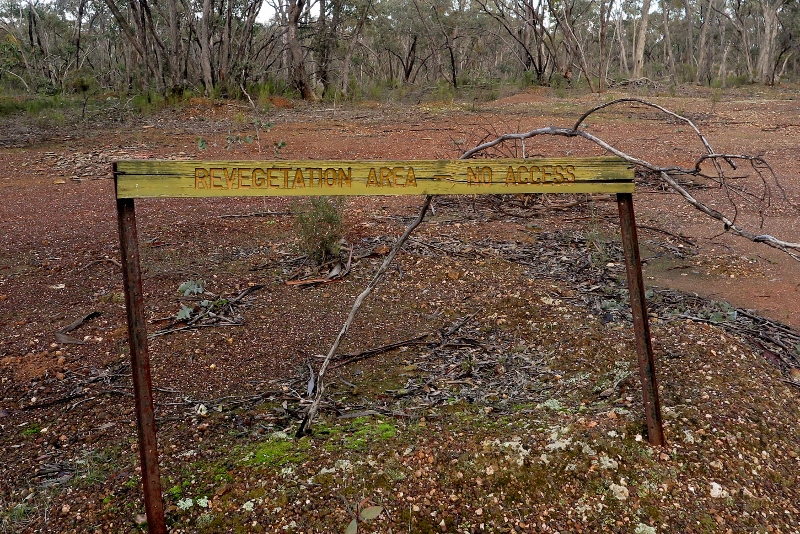
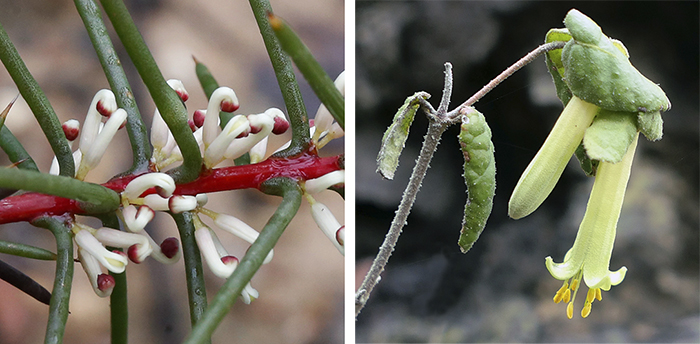



 Click on image for info/order page
Click on image for info/order page Click on image for info/order page
Click on image for info/order page Click on image for info/order page
Click on image for info/order page




















